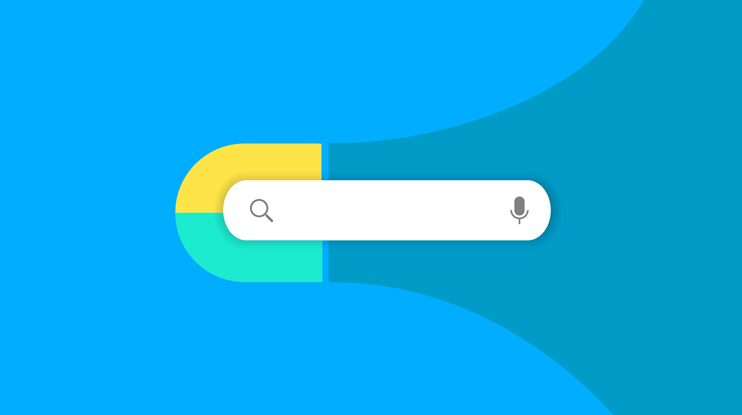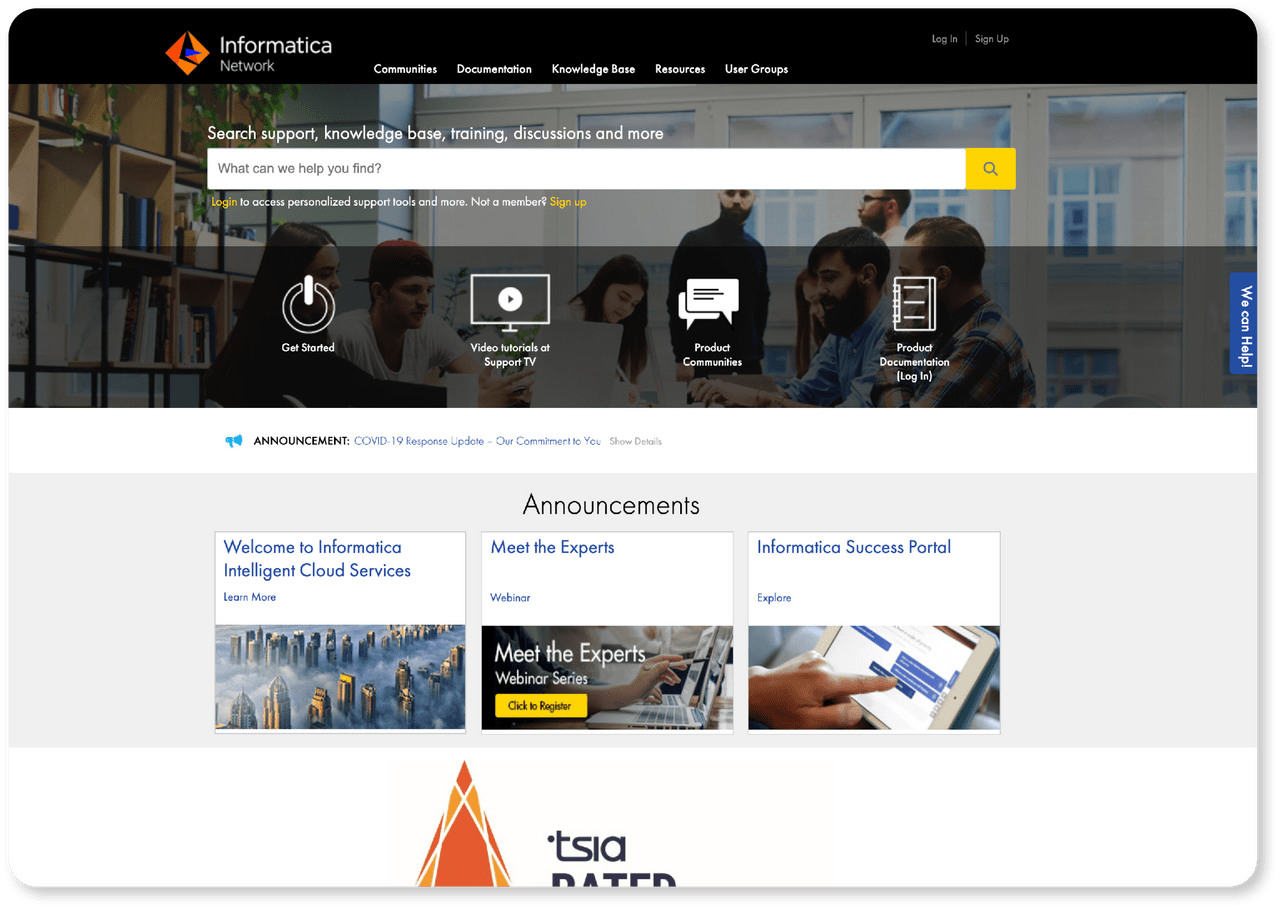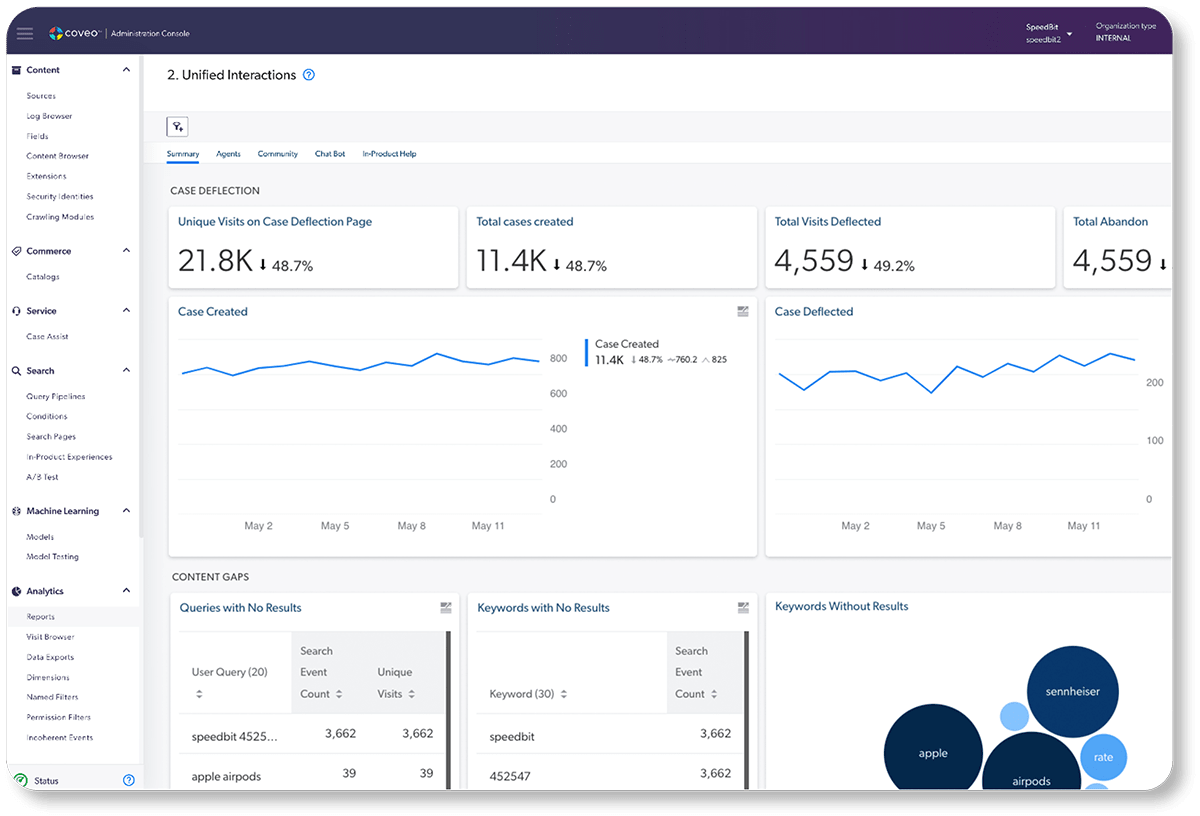Keeping customers is just as important and as difficult as acquiring new customers — but if you’re here, you know that and you’re looking for solutions.
Luckily for businesses today, the majority of customers want to use self-service to resolve their own issues. Meaning they want to be able to go into your app or website and find a solution to their problem.
Unluckily, our most recent Customer Experience Relevance Report shows this is still far from the experience most customers have:
- 84% of respondents said they had to put in a moderate or high amount of effort to find information or get help
- 53% cited “not being able to easily search for and find the information I’m looking for on my own” as the #1 contributor to effort
- 50% were frustrated by having to fill out complex case forms just to talk to someone
- 43% flagged inconsistent communication across departments as a major friction point
And while the frustration is rising, you may not hear about it: This year’s report shows 52% of customers now say they sometimes, often, or always complain — a jump of 10 points YoY — but that still leaves nearly half who won’t tell you when they’ve had a bad experience.
Meanwhile, 72% of customers will abandon a brand’s site after a negative self-service experience, often turning to Google or a competitor instead. That means brands aren’t just losing the conversation — they’re losing the customer entirely.
So what’s lacking about today’s customer self-service channels that leaves customers ghosting to a competitor? We think it’s two things: consistency and relevancy.
Relevant reading: CX Relevant Report 2025 | Customer Effort Is at an All-Time High; Is Search the Key?
How to Calculate Customer Retention Rate?
Let’s start with a refresher, so we’re all on the same page. One of the more important customer service metrics, customer retention rate indicates how well a company is hanging onto and growing its customer base.
Because customer retention metrics impact everything from loyalty and revenue to customer lifetime value, you’ll find customer retention rate right there next to customer satisfaction (CSAT), net promoter score (NPS), and customer effort score (CES) as the leading customer service metrics.
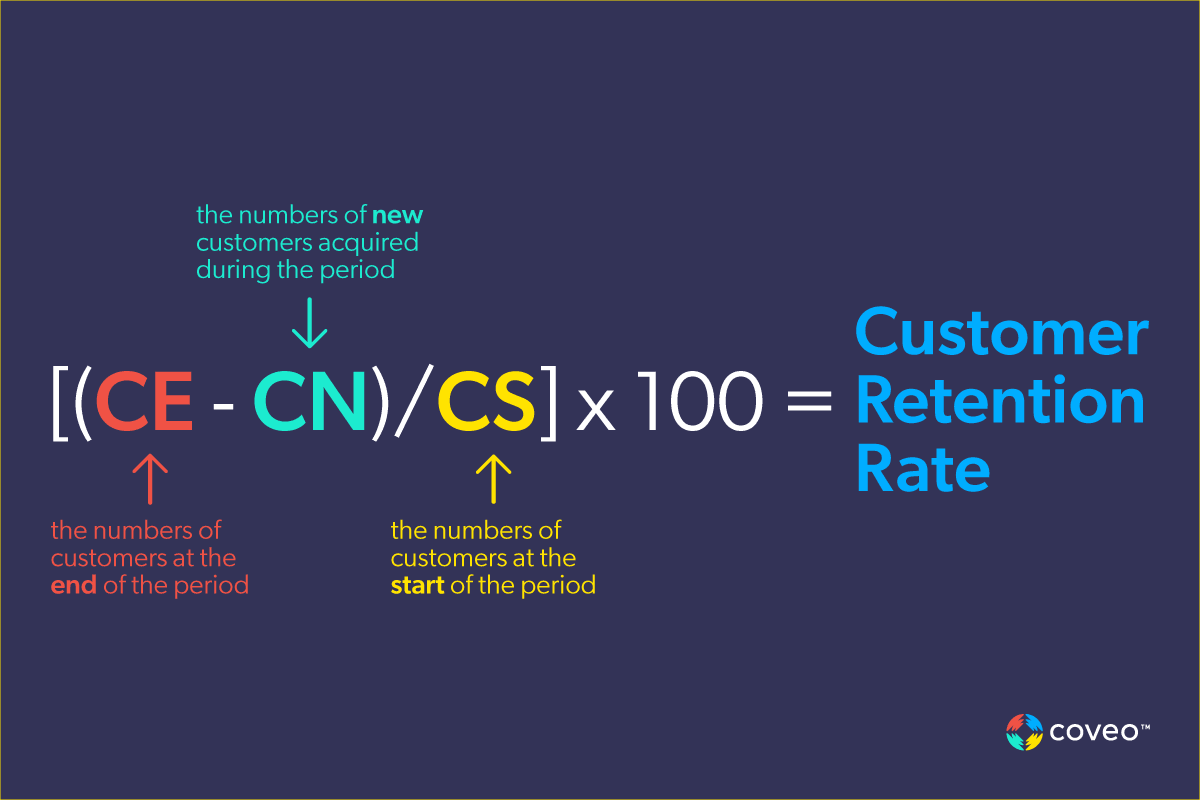
Customer retention rate is particularly useful for evaluating specific time periods, or comparing time periods to reveal broader trendlines. For example, if my regional paper company ended Q4 with 150 customers, added 10 customers during the same quarter, but began the quarter with 180 customers, the customer retention rate is 77%.
As for what constitutes a good customer retention rate, that depends on your company and industry.
Calculating customer retention cost is a bit more complicated. That’s because you’ll need to calculate the cost of retention, which includes all of the costs associated with earning customer loyalty, including:
- Support costs
- Success costs
- Customer loyalty program costs
- Marketing costs
- Product development costs
How to Calculate Customer Retention Cost
Customer Retention Cost = Total customer retention costs / Number of customers retained
For example, if my regional paper company spent $100,000 on customer retention last year and retained 1,000 customers, our customer retention cost would be $100 per customer.
That rate is relatively low compared to, for example, a SaaS company, which typically must invest more in support and success. As with other customer retention metrics, cost will vary across specific industries and companies.
How AI-Powered Self-Service Affects Customer Retention Rates
Qualitatively speaking, customers abandon service experiences because they’re frustrated or upset. Maybe they’re in a hurry to solve a problem so they can get back to what they enjoy.
Quantitatively speaking, the numbers tell a more unambiguous story: people want the information they need to do what they need to do — and they want it without fuss. When you have to switch between an online chat to a mobile app to a phone call that leaves you waiting on hold for 30 minutes, well, that doesn’t translate to a great experience.
Thankfully, there’s a strong tie between self-service and customer retention rate. Customers who resolve their issues quickly and easily through self-service are more likely to be satisfied with the customer experience. In the long run, they’ll be more likely to continue doing business with the company. Customers on the receiving end of an AI-powered self-service experience often experience greater satisfaction, as evidenced by Salesforce achieving a +90% self-help success rate through the use of AI.
Here are some ways that AI-powered self-service can lead to increased customer retention:
- AI-powered self-service can reduce customer frustration. It’s annoying to wait on hold or contact a customer service agent to resolve a simple issue. Self-service (especially when powered by a unified index that brings consistent answers across channels) allows customers to avoid call transfers, being put on hold, or running into dead ends.
- AI-powered self-service saves customers time. Customers can often resolve their issues more quickly through self-service than they can by contacting a customer service agent. This is because self-service resources are available 24/7, and the use of machine learning models specifically built for service means that the most relevant answers are surfaced faster.
- AI-powered self-service empowers customers. It gives customers more autonomy over their customer experience. They can choose to resolve their issues at their own pace and in a way that is most convenient. What’s more, if they’re looking to learn more about your product, AI-powered recommendations can provide insight into related topics — even ones that might not seem obvious.
AI-Powered Self-Service Best Practices for Creating Loyal Customers
The state of your customer self-service channels play an essential role in customer engagement, retention, and loyalty. Beyond getting customers what they need in the moment, be it an AI chatbot or while searching the knowledge base, self-service relevance can reduce friction significantly.
But even though 65% of customer service organizations plan to increase their investment in self-service technologies in the next two years, the ROI of those investments depends on some important best practices:
Unify Digital Channels
Investment in customer self-service is one thing; seamless integration is another matter altogether. For example, 77% of respondents to a McKinsey’s The state of customer care in 2022 survey have built digital platforms; but 88% have yet to highly integrate those platforms. And only a fifth of those digital contacts can be handled without any assistance.
Integrating and unifying self-service channels is a critical step. For one thing, it maximizes the data available for AI-powered optimizations, which enable personalized self-service experiences. It also tends to keep customers around. In fact, 70% of customers spend more with companies that can provide “fluid, personalized, and seamless customer experiences.”
Unify Content Sources Into a Single Searchable Index
In our fight to meet customer expectations, my theoretical regional paper company needs to maximize case deflection. Our customer service agents are simply overburdened with the same issues, such as password resets, order status requests, and the like.
We’ve identified our Salesforce Community as the place to handle many of these issues. For our company, this is often the first stop for customers looking to self-serve.
The first step is to bring all of our organization’s case-deflecting content—all that good data stored in SharePoint, file shares, knowledge bases, and even Slack—into a unified search index. That index will power the search bar sitting front and center on every page of our community site, as well as any other self-service channels we might invest in.
Make it Effortless for Customers and Agents
We’ve established that customers will leave if they can’t find what they need. This creates even greater incentive for service and support professionals to make sure that an active customer only reaches out to support when they absolutely have to.
Self-service helps automate routine tasks, like repeat cases that don’t necessarily require human intervention. For instance, 65% of leaders consider improved self-service as a key driver of decreased call volume.
Most people will recognize this as case deflection.
Case Deflection vs. Self-Service: What’s the Difference?
Case deflection is the rate at which customers can find their own answers to issues that would have otherwise required a customer support query. Self-service is the rate at which customers can complete a transaction, or answer a question, using site search , community forums, etc.
With a solid self-service offering in place, companies stand to significantly reduce the volume of low-touch, repeat cases that routinely overburden contact centers, and ultimately harm revenue. This eases the pressure on agents, helping to alleviate agent burnout and turnover.
What’s good for agents is typically good for customers.
Informatica is a perfect example. The data management provider knew that its customers wanted self-service, but found that 20% of searches on the support site were yielding no results. So they invested in unified search and AI-enhanced surfacing, which halved their content gaps, while precipitating a 120% improvement in case deflection.
AI-powered self-service also helped AARP increase case deflection by 62%. For Tableau , self-service-assisted case deflection helps save $1M per month. On the agent’s side of things, self-service helped Medallia’s agents handle 34% more cases on their own, without escalating to the next tier of support.
Consider Adding Generative Answering
Generative answering may be just the ticket for helping customers find the answers they need — if this service is implemented with care. You want to make sure you ground the context before passing the relevant snippets or chunks of information to the large language model (LLM). Coveo Relevance Generative Answering does just that.
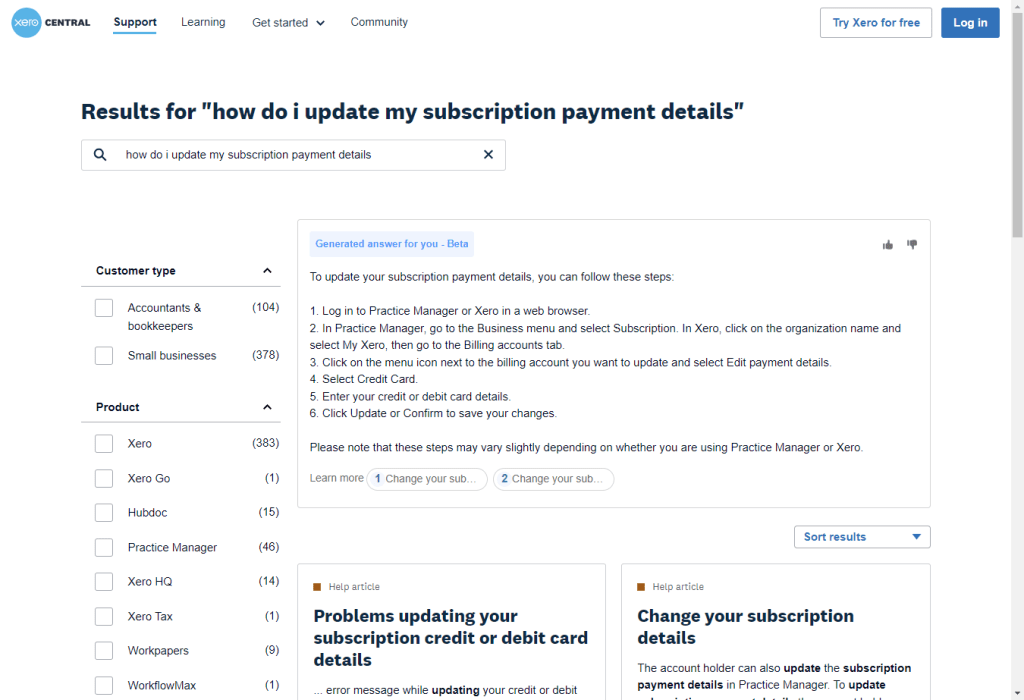
Using this process assures:
- Generated answers use your enterprise information to mitigate hallucinations.
- With document permissions adhered to, the customer sees only the information they are allowed to see.
Provide Proactive Content and Search Recommendations
When companies can proactively offer contextually relevant information, things go more smoothly for customers.
We’ve seen this exemplified in the impact that personalized recommendations have on agents serving customers. When agents don’t have to poke around, but receive AI-powered recommendations within their agent view, they’re able to serve customers better.Salesforce support engineers experienced this when they were able to cut their search time by 75%.
Companies have an opportunity to create a similarly personalized experience for customer self-service. You can find an example of this process detailed in How to Turn Your Salesforce Community into a Case Deflection Engine with AI, but here’s what this process looks like in brief:
Automatically Personalize Content Recommendations
Next we need to personalize our content recommendations based on real-time analysis of customer site activity, profile information, and other history. For all users, the search bar will actively suggest content as the user types.
For authenticated users, we can deliver more personalized messages based on similar customer behavior. We can further personalize content based on:
- Product(s) owned
- Support plan
- Geo-location
- Role
- Search query
- Click path
Learn and Improve Search Based on Analytics
Lastly, we need search analytics that we can act on to continuously improve the experience for both the current customer and to engage prospects. So we’ll integrate an analytics engine that helps us see what content people are engaging with, what’s missing, and other usage patterns.
Are there articles that are deflecting more cases than others? What are the most searched-for terms for which we don’t have content published? This data will help us refine the community experience for our customers and improve the customer relationship overall.
Support Customer Journey Mapping
Understanding the customer journey is essential to customer self-service success. A terrific means for doing so is to build a customer journey map, which details every touchpoint a customer has with your brand.
Given the volume of customer interactions, self-service channels provide a lot of data that can be used in journey mapping. For example, analytics on self-service content can reveal what content particular customers frequently engage with on the way to submitting a case. It can also provide clues as to where customers are hitting dead-ends and bailing.
Here’s an example of a visual customer journey map:
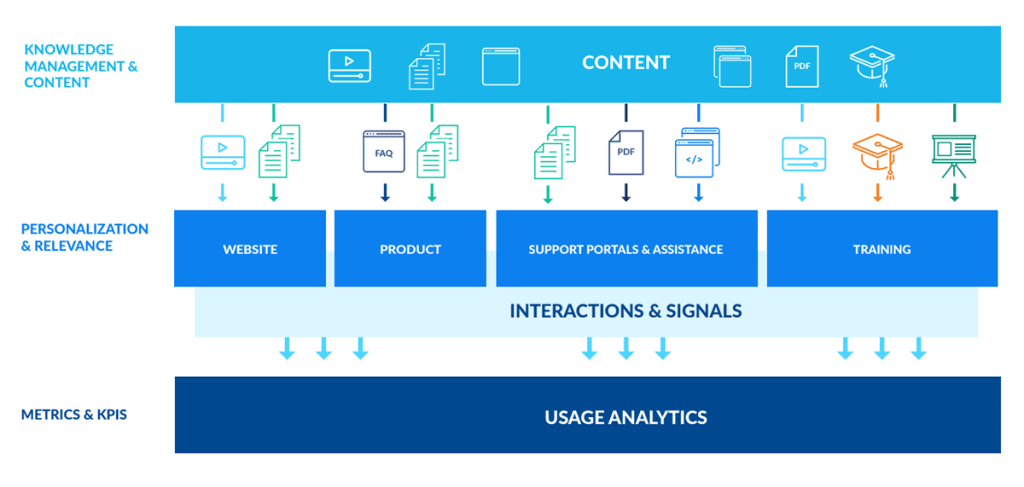
As for my regional paper company, I’m going to begin my customer journey mapping by focusing on our self-service portal (the community). I’m certain that by looking at a defined audience that we already know a lot about, we can reveal some low-hanging fruit with regard to improving the experience.
Relevant reading: Free Customer Self-Service Journey Map Template
Toward Intelligent Self-Service and Loyal Customers
I’m hardly the doomsday type, but there are some pressing reasons for prioritizing customer retention. Continued economic uncertainty and evolving workplace environments, to name a few. One of the most effective ways to show both existing and new customers that they’re valued is to help them help themselves.
A strong self-service offering, one rooted in data-driven insights and personalization, can pay tremendous dividends, both qualitative and quantitative. Just ask Informatica, AARP, and some of the other companies whose self-service initiatives play a critical role in retaining customers.
What these and other companies understand is that self-service is critical to a scalable support organization that promotes customer success. To see exactly how they pull it off, check out our Guide to Delivering Intelligent Self-Service, which includes seven best practices based on real-world examples.
Dig Deeper
Did you know that when asked what would improve self-service, 51% of customers said they want to see the answer directly within search results — not buried in a help article? And that 53% of all respondents identified “not being able to easily search for and find the information I’m looking for” as the #1 problem in their self-service experience?
Read the 2025 Customer Experience Relevance Report for these and other insights that will help you improve your customer retention strategy, brand loyalty, and overall customer value.

